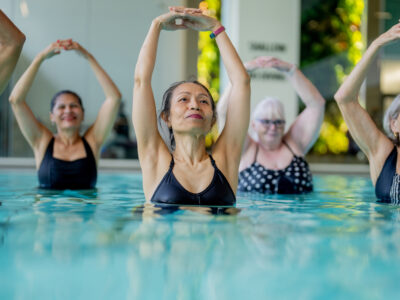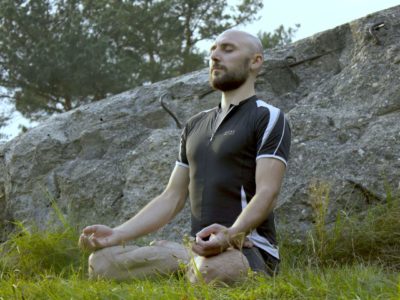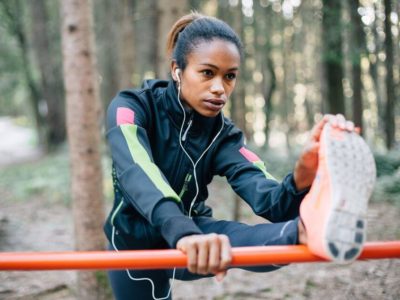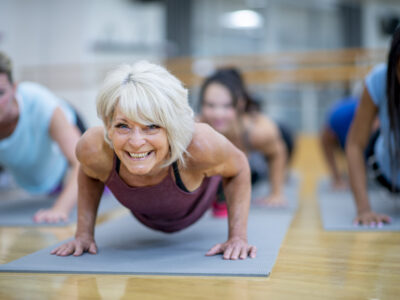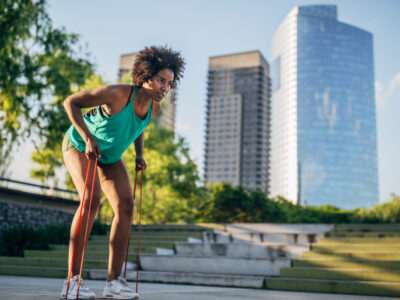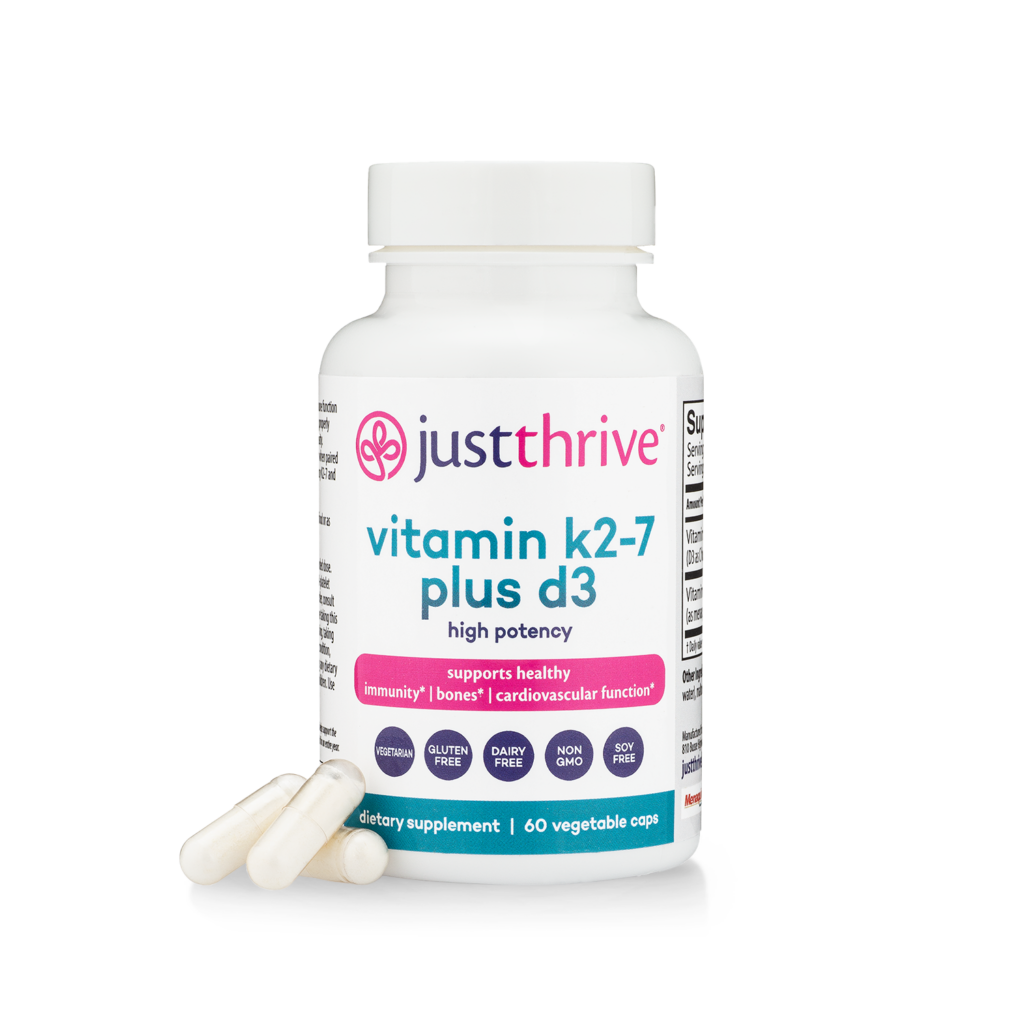Table of Contents[Hide][Show]
As the saying goes, “Aging is a privilege.”
But it’s not enough to just live longer. You want to make sure you stay healthy enough to enjoy activities you love and live life to the fullest.
And through longevity training, you can do just that!
Let’s take a closer look at longevity training, its many benefits, and simple exercises you can do to boost your health, vitality, and well-being—for years to come.
What Is Longevity Training?
Longevity training is more than just the latest fitness trend. It’s a proactive way to age well by focusing on your long-term health, mobility, and vitality.
Unlike high-intensity workouts or short-term fitness “challenges”, longevity training focuses on sustainable practices that promote your overall well-being as you age. This holistic approach extends past physical exercise, often including mindfulness practices to lower stress and nutritional plans tailored to optimal aging.
The key goals of longevity training include:
- Building strength, to support everyday activities
- Improving flexibility, to maintain range of motion
- Increasing cardiovascular endurance, to support heart health
- Maintaining balance, to reduce the risk of falls
By prioritizing these areas, longevity training can help you stay active, so you can continue to enjoy your lifestyle and independence as you grow older.
And the best part? It’s never too early—or too late—to start. Because it’s not just about living longer—it’s about living better, with the strength, energy, and confidence to thrive at any age.
Whether you’re staying active for your favorite hobbies, keeping up with your grandkids, or simply wanting to feel better in your day-to-day life, longevity training can make a positive, lasting impact. Let’s take a closer look at that impact by exploring the benefits of longevity training.
Related
10 Best Herbs for Energy and Vitality
Feeling more lethargic than usual? These ten herbs for energy and vitality will help you cope with stress better, beat fatigue, and get sleep.
The Top 4 Benefits of Longevity Training
The intention of longevity training is to maintain physical independence and promote a longer, healthier life. But the benefits go far beyond those goals. You’ll see improvements in everything from your energy level to your mood—not to mention in your ability to perform everyday tasks with ease and comfort.
Here are some of the most important benefits of longevity training.
1. Strengthen Your Bones
Osteoporosis is one of the greatest concerns as you age. This condition weakens your bones, making them more brittle and more likely to fracture or break.
Studies show that strength training—one of the pillars of longevity training—can reduce the risk of osteoporosis.
As part of your longevity-enhancing routine, you can also take a supplement to encourage your bone health, such as Vitamin K2-7 Plus D3 by Just Thrive. In addition to promoting your immune system and driving peak energy levels, it contains two essential vitamins to support strong, healthy bones.
- Vitamin D3, which your body needs to absorb bone-supporting calcium
- Vitamin K2, which your body uses to direct calcium where it’s needed (like teeth and bones) and keep it away from where it isn’t (like arteries and joints)
2. Improve Metabolic Health
Metabolic health—specifically, a high metabolism—is usually linked to burning more calories. But it goes much further. Your metabolic health includes everything related to how your body converts food into energy, including how it processes sugar and fat.
With longevity training exercises, you can improve your metabolic health. This, in turn, can have several positive health results including:
- Managing weight and reduce the likelihood of obesity
- Lowering your blood pressure
- Decreasing your chance of diseases such as diabetes, cardiovascular disease, and cancer
- Improving your energy, mood, skin health, and fertility
3. Support Your Heart Health
Another pillar of longevity training—cardiovascular exercise—can have an incredibly positive impact on your heart health. When you participate in cardio activities, it forces your heart and lungs to work harder to sustain your movements.
With time and consistency, this can lower blood pressure, reduce your cholesterol level, and improve your circulation—all contributing to a healthy heart and cardiovascular system.
4. Boost Your Mood and Cognition
The link between exercise and mood is long-established.
Exercise releases feel-good hormones, such as endorphins, which can increase self-esteem, lower the risk of anxiety or depression, and enhance your overall mood. It can also provide a healthy and much-needed distraction from negative thoughts.
Studies also show that longevity training—through exercise—can improve your cognitive function, including concentration and memory.
With these powerful and undeniable connections, longevity training exercises can be just what you need to maintain a positive attitude and sharp mind.
Related
Can’t Focus? 11 Ways To Improve Your Concentration Naturally
If you can’t focus on the things you need to get done every day, these 11 tips can help improve your concentration and attention naturally.
How to Start Longevity Training
Ready to incorporate longevity training?
Here are some important things to keep in mind as you get started.
It’s Okay to Start Slow
Longevity training isn’t just about exercise—although movement does play a key role. The right exercises can help you achieve all four of its main goals: improving strength, endurance, flexibility, and balance.
But if it’s been a while since you’ve gone for a walk or hit the gym, starting with longevity training can feel overwhelming. Don’t be discouraged! Remember, longevity training is a long-term goal—you don’t have to achieve it overnight.
Take it one step at a time, allowing your body time to adjust to your new routine gradually if necessary. This slow-but-steady approach can help you avoid any potential injuries while building habits that will support your health and vitality for many years to come.
Prioritize Consistency
Consistency is an essential part of longevity training—what you do regularly will have the biggest impact on your health.
With that in mind, it’s better to move your body a little bit each day than to push yourself so hard that you burn out or suffer an injury. Small, consistent efforts add up, creating a foundation of strength, flexibility, and endurance that supports your overall health.
Plus, prioritizing consistency helps create habits that stick. It’s easier to maintain a routine that you do naturally—a walk every day after lunch, balance exercises while you watch your favorite show, or having a regularly scheduled time at the gym.
That said, give yourself grace if your new habits get—temporarily—derailed. Life happens! Take a deep breath, find even small spots in your schedule, and begin again.
Be N.E.A.T.
Not tidy, but NEAT—which stands for Non-Exercise Activity Thermogenesis. Basically, this refers to the energy you expend when you’re doing activities other than exercising, sleeping, or eating. For example, you’d need more energy to work in your garden or clean your home than if you’re scrolling through your phone or watching television.
Your daily NEAT can make a difference in your overall health. If you’re mostly sedentary, with a lower NEAT, you’re at a higher risk of obesity and long-term health conditions such as diabetes.
By staying active—increasing your NEAT—throughout the day, you can:
- Burn calories without stressing your joints or muscles
- Support your cardiovascular health
- Maintain a higher metabolism
- Preserve your mobility
- Create a sustainable, lifelong habit of movement
Train for Your Life
Longevity training isn’t about running a marathon or being able to max out on power squats. It’s about keeping your body fit for the activities you love—whatever they may be.
For example, if you’re an avid gardener, you need the strength and flexibility to kneel, bend, dig holes, and carry heavy bags of soil or mulch. If you love to travel, you’ll need the strength and endurance to walk through bustling cities, climb stairs at historic landmarks, and lift your luggage into the overhead compartment.
Longevity training is highly personal. Identifying your passions and focusing on the lifestyle you want to maintain can keep you inspired—more than trying to hit a specific number in the gym or on the scale. And by tailoring your workouts to prioritize the movements and abilities that align with your interests, you’re not just building strength or endurance. You’re preserving your ability to live a life filled with activities that are meaningful to you.
The Best Longevity Training Exercises for Beginners
Time to get moving! Whether you’re new to exercise in general or just new to longevity training, here are the best exercises to get you started.
For Strength
Strength training is an essential part of longevity training, helping you maintain both muscle mass and bone density as you age. By strengthening your muscles and bones, you can reduce the risk of falling. Plus, strength exercises help you stay physically capable of performing everyday tasks—from carrying groceries to cleaning your home—allowing you to stay active, healthy, and independent.
Instead of putting your effort into exercises that target specific muscles or small muscle groups—isolation exercises—get the maximum impact from your workout with compound exercises.
Compound exercises include movements such as squats (which work your quads, glutes, and calves) or pushups (which work your pectorals, deltoids, triceps, trapezius, and core). These exercises are better for building strength, as they use multiple muscle groups at once.
Here are some longevity training strength training exercise ideas.
- Squats
- Pushups—you can also do these on your knees or against a wall
- Front lunge with a torso twist
- Deadlifts—you can do these with one foot back against the wall to add a balance exercise
- Bench press
- Step-ups, on a bench, stool, or step
These can be done with just your body weight, with exercise bands, or with dumbbells or a barbell.
Related
Park Over Gym: 10 Strengthening Moves You Can Do Amidst Nature
In the Information Age, serious trainees and weekend warriors everywhere are waiting on technology to deliver the next great innovation to the doorstep of the fitness arena. With all of the bells and whistles being promoted as necessary to get ripped, shredded, and downright crazy lean, many have fallen into the “I need a gym …
For Cardiovascular Health
Good news! You don’t have to run, jump, or do burpees—unless you want to, that is.
Cardiovascular exercise is a key part of longevity training.
It can improve your circulation, lower your blood pressure, and support your heart health. It can have a positive impact on your mood!
Here are some easy ways to get your cardiovascular exercise.
- Walking, jogging, or running
- Hiking
- Swimming
- Biking or indoor cycling
- Dancing
The key is finding an activity you enjoy, so that exercise feels less like something you “have” to do and more like something you actually look forward to.
For Flexibility
Can touching your toes help your longevity? Maybe!
As you get older, you naturally lose some range of motion in your joints and muscles. That’s why flexibility exercises are a crucial part of longevity training. These exercises can help keep your body loose and limber, reducing painful stiffness and making everyday movements—such as bending or reaching—easier.
Plus, research shows that by improving mobility and reducing pain, increased flexibility encourages you to stay active—contributing to your long-term health and longevity.
Here are some ways to gain or maintain your flexibility.
- Stretching
- Yoga
- Tai chi
For Balance
Falling becomes a much greater risk as you get older. More than 1 in 4 people over the age of 65 fall each year, which can lead to serious injuries, reduced mobility, and the loss of your independent lifestyle.
Balance exercises can help you maintain stability and coordination. This doesn’t just help reduce the risk of falling. It also helps you with everyday activities such as walking, climbing stairs, and more.
Here are some balance exercises to get you started.
- Weight shifts: Stand with your feet shoulder-width apart. Shift your weight to your left leg and lift your right foot off the floor. Hold for as long as you can, then switch sides.
- Single leg balance: Stand on one leg. Bend the other knee, bringing your foot up and behind you. Hold for as long as you can.
- Heel-to-toe walk: Walk in a straight line, putting the heel of one foot directly in front of the other.
- Toe stand: Stand with your feet shoulder-width apart. Raise up onto your toes and hold, then lower. Repeat. (Hold the back of a chair or a wall if you feel unsteady.)
Adding these and other balance exercises into your routine can help improve your posture, heighten your body awareness and coordination, and increase your confidence when moving—all part of staying active and independent as you age.
Final Thoughts
Getting older doesn’t have to mean giving up the lifestyle you love!
With longevity training, you can maintain your health, strength, and mobility well into your later years. The key is being consistent and making choices that support your long-term well-being.
Remember, when you prioritize your health with longevity training, you’re not just adding years to your life; you’re adding quality. And you can keep doing what you enjoy while living a meaningful, fulfilling life for years to come.
You May Also Like…

